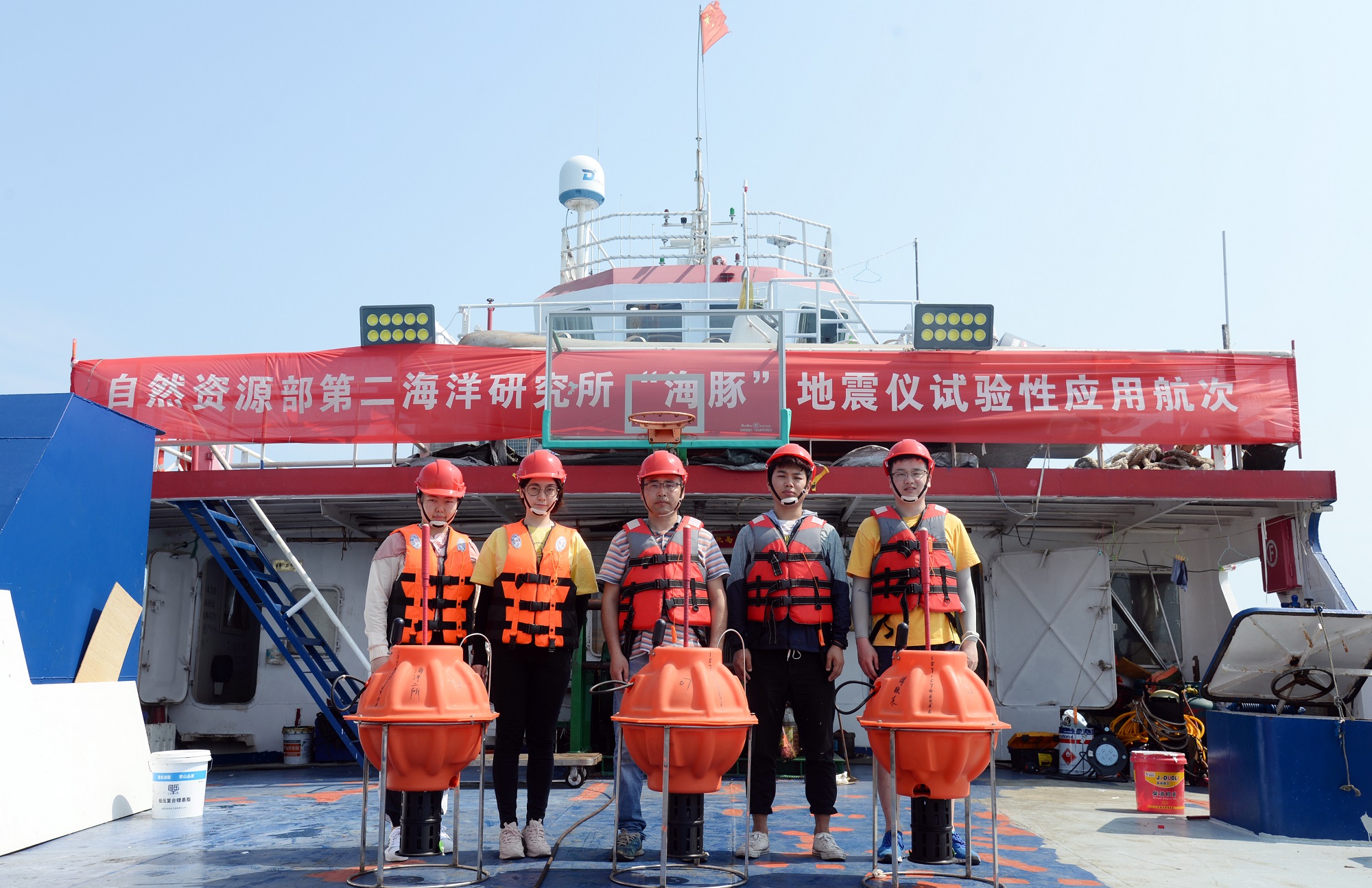News

Recently, the "Dolphin" mobile marine seismograph independently developed by Ding Weiwei's team at the Key Laboratory of Submarine Geosciences, MN was put into trial use in the South China Sea.
The "Dolphin" mobile marine seismograph is mainly developed against the disadvantages of traditional fixed OBS such as high cost of layout and recovery, short data recording period, and non-real-time. Through intelligent networking, P-wave tomography can be carried out in large areas of sea area to make up for the lack of seismic ray coverage.
In the pilot application voyage, the scientific research team deployed three "dolphin" seismometers in the deep water area of the northern South China Sea to form a triangular array, with the spacing of about 40 nautical miles, and normally suspended at the depth of 800m. It was planned to carry out a three-month offshore seismic P-wave observation to verify the long-term stability and reliability of key technologies of "dolphin" seismograph such as ultra-low power consumption control, high-efficiency buoyancy regulation, autonomous levitation depth determination and seismic identification, so as to lay the foundation for the upcoming business application. One day after it was put into use, the seismograph recorded a magnitude 4.2 seismic signal that occurred in Taitung County, Taiwan. The waveform was clear and the transmission distance exceeded 1,000 kilometers, which verified the sensitivity and reliability of the seismograph.
The "Dolphin" seismograph has been developed since 2017. The team has broken through a number of key technical bottlenecks. The successfully developed seismograph has the normal working depth of 800-1200 meters and the maximum designed working depth of 3000 meters. It can monitor earthquakes of magnitude 6 or more within 10,000 kilometers, with the working life of more than 3 years.



